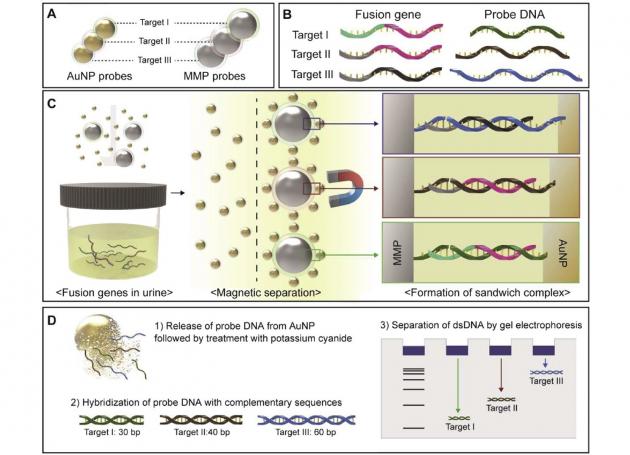Korea Institute of Science and Technology (KIST) has developed a new method to diagnose prostate cancer quickly and accurately with only a small amount of urine.
The researchers hope to overcome the limitations of conventional diagnostic methods that use invasive techniques, and diagnose prostate cancer more accurately, KIST said Thursday.
Academic studies show malignant prostate cancer rate in Koreans is higher than in other countries, attributing it to the difficulty of early detection and the inaccuracy of the existing test method. The more malignant the cancer is, the faster the metastasis occurs and the more difficult it is to treat.
The existing method is to confirm the prostate-specific antigen (PSA) concentration by blood test and confirm the cancer occurrence through precise biopsy if it is above a certain concentration. However, there is a problem that PSA concentration in the blood can be influenced by hormone changes and cannot transmit direct information related to cancer. The blood test method also makes it troublesome to visit the hospital which makes the examination rate very low.

To solve these problems, the team developed a new method for the detection of noticeable substances, which is easy to sample and can more accurately diagnose prostate cancer. The researchers used barcode DNAs of different lengths for simultaneous multiplex detection known to express in prostate cancer specifically.
When the barcode DNA is attached to the gold nanoparticles to amplify the signal, and the barcode DNA separates in length through electrophoresis in which the substance moves in the electric field during the final detection step, the fusion gene existing in the urine can be detected with high sensitivity.
"The bio-barcode method developed in this study can detect fusion genes that exist in trace amounts only with a small amount of urine of about 10 ccs,” said Dr. Lee Kwan-hee of KIST. “It is possible to reduce the refusal of the test method because there is no pain in the patient as much as the detection method by the urine,”
The technology applied to this screening method can also be used for the field of diagnosis for detecting various disease-specific genes and for the prediction of disease prognosis, he added.

